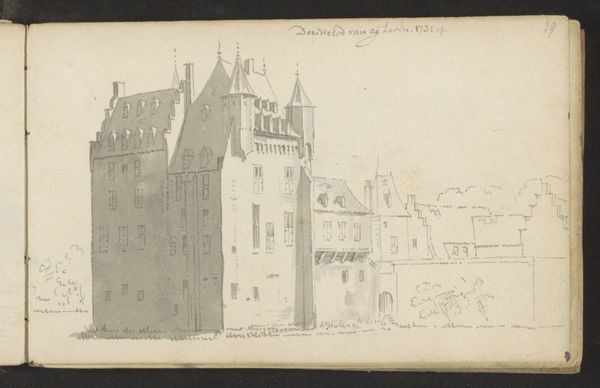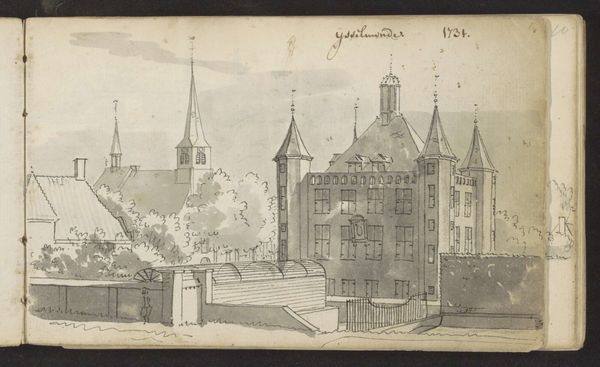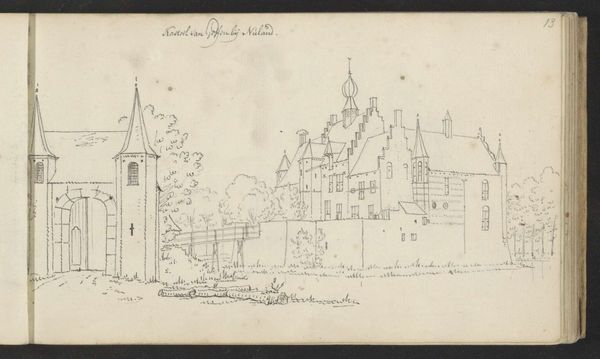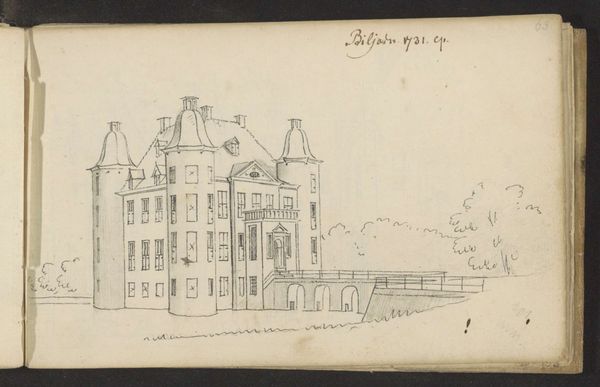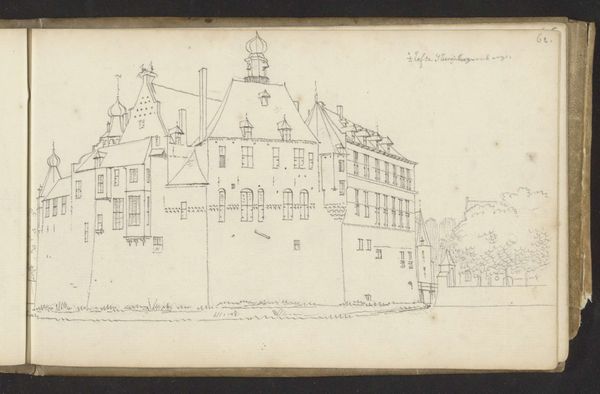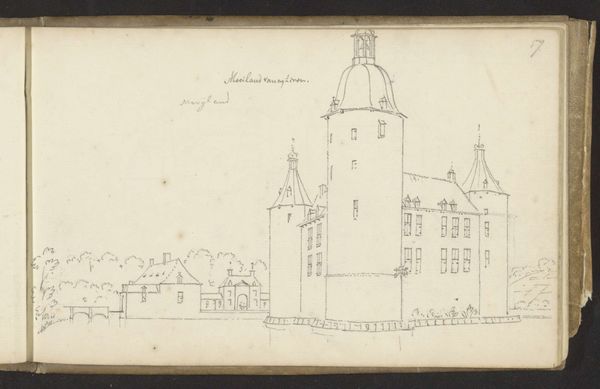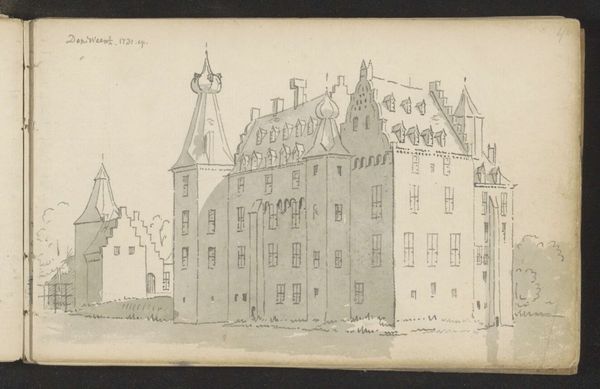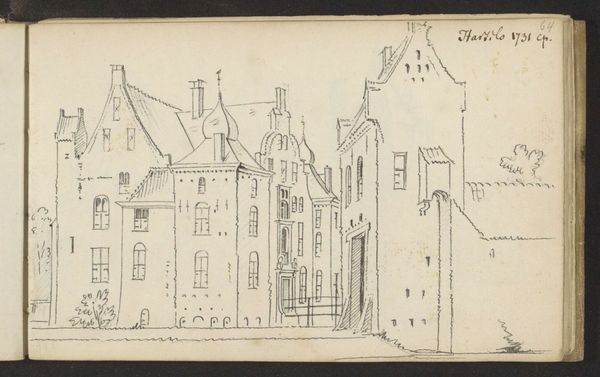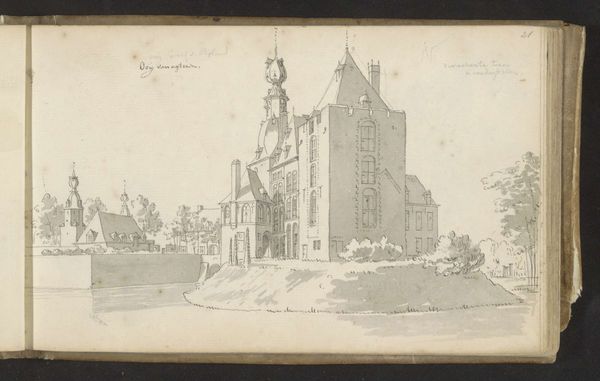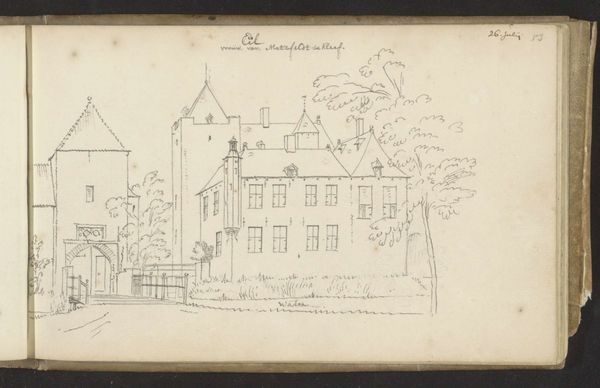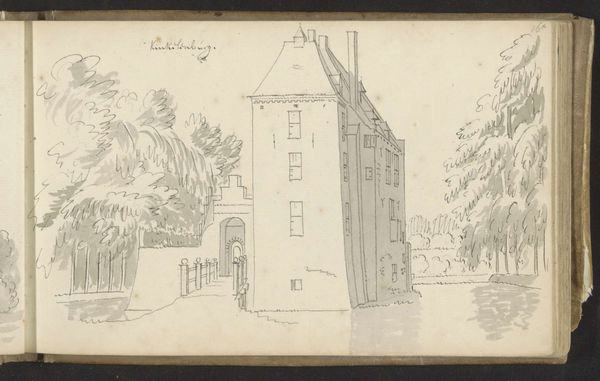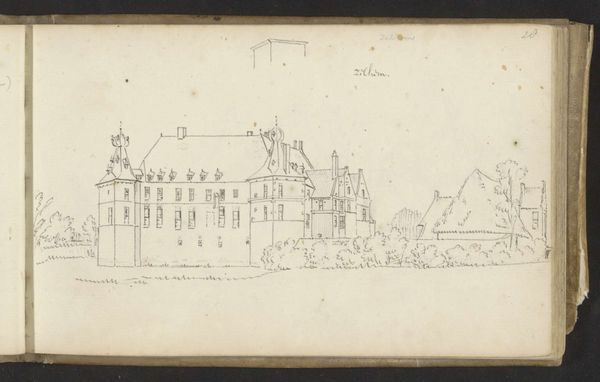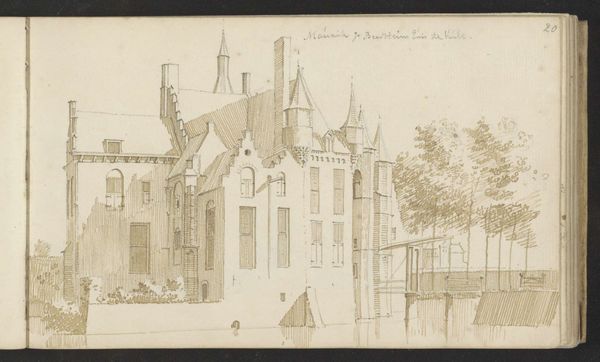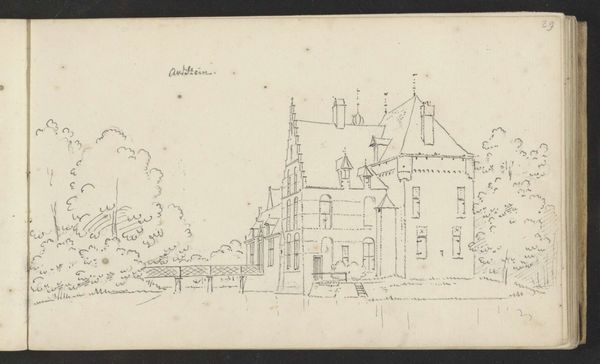
drawing, paper, ink
#
drawing
#
baroque
#
landscape
#
paper
#
ink
#
cityscape
Copyright: Rijks Museum: Open Domain
Curator: This drawing presents Kasteel Linschoten as captured by Abraham de Haen the Younger in 1731. Executed in ink on paper, it’s a remarkable cityscape now held within the Rijksmuseum collection. Editor: Immediately, the scene conveys such stillness. There's a quiet grandeur about it, isn’t there? The way the artist uses minimal strokes gives the building a somewhat spectral quality. Curator: That stillness resonates. Country estates at this time reflected the socioeconomic and political landscape of the Dutch Republic, which despite being mercantile was heavily shaped by powerful families. It depicts both authority and leisure, wouldn't you agree? Editor: Precisely. What interests me is the apparent symmetry and what that implies in the power structures reflected in architectural choices. Did it serve a symbolic role in Dutch society? What class lived here? And did its power dynamics reinforce or challenge class struggles in society? Curator: These images, presented as idealized depictions of harmony, very purposefully downplay the complicated social relations that enabled these luxurious lifestyles. Think about the sources of wealth for estate owners and whether their prosperity hinged on global exploitation of labor. Editor: Absolutely. Considering this piece through a lens of class and wealth allows us to dissect these landscapes. For example, the composition is focused, isn’t it, on framing it as this grand symbol that requires deeper analysis to contextualize it? Curator: De Haen’s work highlights the formal structure, with the balanced composition acting as a form of cultural projection. Editor: Seeing how you interpret it brings a different kind of understanding and context into this piece. It moves us to considering how imagery of powerful locations can shift our own interpretations and our assumptions of them and the figures associated. Curator: Yes. Appreciating De Haen's work prompts consideration for both its aesthetic merits and its entanglement within systems of wealth, influence, and often inequity. Editor: Absolutely; thank you. The socio-political considerations you’ve given add nuance, making me want to explore the broader context in this cityscape, beyond its immediate tranquility.
Comments
No comments
Be the first to comment and join the conversation on the ultimate creative platform.
